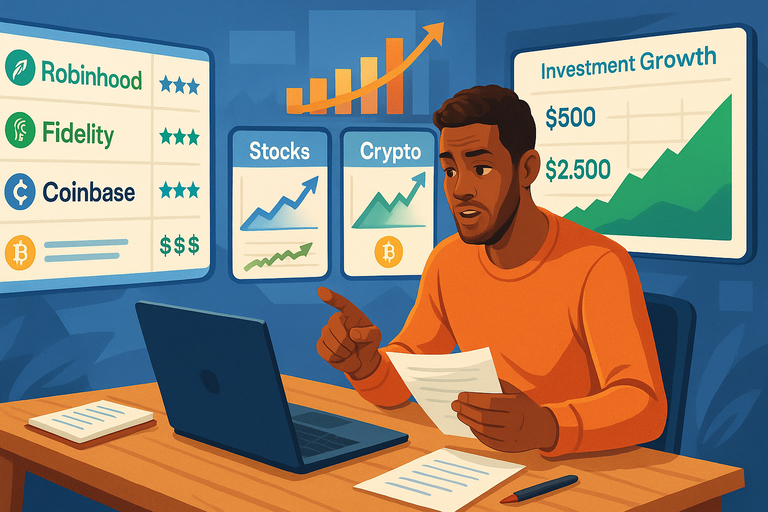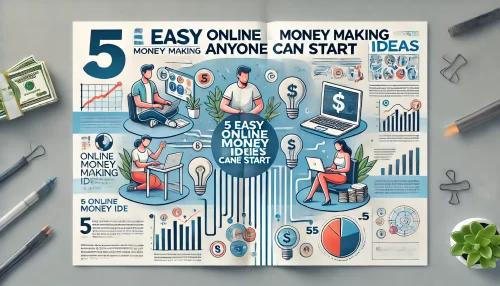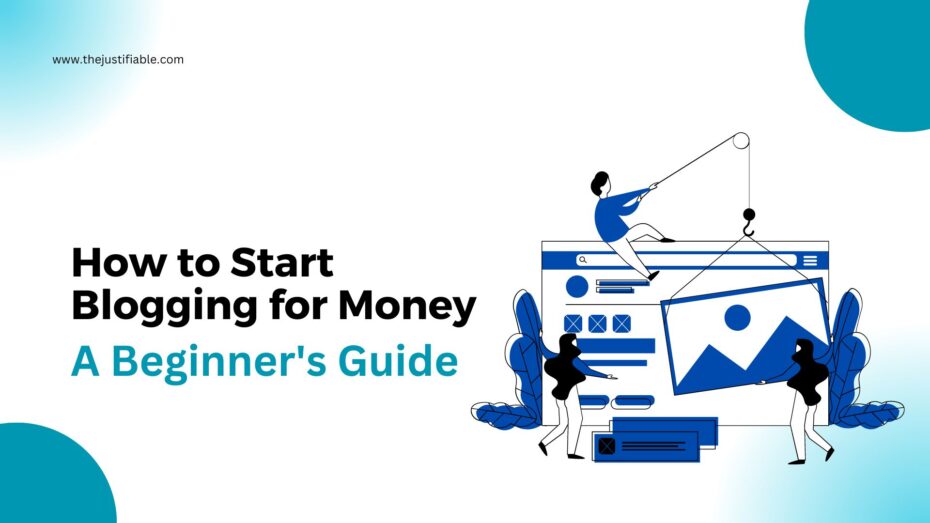Table of Contents
Want to grow your money fast without falling for empty promises? The idea sounds exciting, but how realistic is it? Can you really double your savings in a year, or is slow and steady still the smarter play?
In this guide, we’ll unpack the truth about what works, what doesn’t, and the strategies you can use to make your money work harder for you.
The Reality Of Trying To Grow Your Money Quickly
Everyone wants to grow their money faster, but the truth is that quick growth often comes with strings attached.
Before diving into flashy opportunities, it’s worth looking at what “fast” really means and why the risks can sometimes outweigh the rewards.
High Risk Usually Means High Stress
Chasing rapid returns can look exciting, but it’s rarely smooth sailing. Think about day trading or crypto speculation. On the surface, it feels like you can make thousands in a week.
But what you don’t see is the constant monitoring, the emotional rollercoaster of price swings, and the sleepless nights wondering if your investment will tank before morning.
In my experience, stress has a way of clouding judgment. When you’re under pressure, you make emotional decisions rather than logical ones. That’s why seasoned investors often talk about “risk tolerance” — it’s not just about whether you can afford to lose money, but whether you can stomach the ride.
If you want money to grow without draining your mental energy, focus less on how fast and more on how sustainable. High stress may push you into mistakes that erase any short-term wins you worked hard to get.
Why Shortcuts Rarely Lead To Long-Term Wealth
It’s tempting to believe there’s a shortcut to wealth — a stock tip, a “next big thing” investment, or some insider trick. The problem is, shortcuts are usually just detours that look faster but end up leading nowhere.
I’ve seen people put all their savings into a single hot trend, only to watch it crash. They were left starting from scratch, while their friend who just invested slowly in broad funds kept growing quietly in the background.
The reality is that shortcuts don’t build financial habits. They skip the foundational skills of patience, diversification, and discipline.
If your goal is to build lasting wealth, the better route is to think long-term. Shortcuts often make you rich in stories, not in actual net worth.
Understanding The Balance Between Time And Growth
The uncomfortable truth about money is this: time is the greatest multiplier. If you give your money enough years to work, it doesn’t need to grow fast — it will compound into something substantial on its own.
Here’s a simple example: If you invest $500 a month at a 7% annual return, in 10 years you’ll have around $86,000. Keep that going for 20 years, and you’re looking at over $250,000. At 30 years, it’s nearly $600,000. The money itself hasn’t changed — your timeline did.
The faster you want growth, the more risk you have to accept. The slower you’re willing to let it build, the less you need to gamble. That’s why understanding your personal timeline is so critical.
If you have decades, you don’t need risky plays. If you only have a few years, the smarter strategy might be less about investing and more about increasing income.
Proven Ways To Grow Your Money Without Extreme Risk
If you want to grow your money but keep your stress levels manageable, the good news is there are time-tested strategies that work.
They won’t double your savings overnight, but they will get you closer to financial independence without the constant panic of high-risk investing.
Building Wealth Through Compounding Returns
Compounding is like a snowball rolling down a hill — it starts small, but as it rolls, it picks up more snow, getting bigger and bigger. When it comes to money, compounding means your earnings generate more earnings.
Let’s say you invest $1,000 at 7%. After one year, you’ve got $1,070. In year two, you don’t just earn interest on the $1,000, but also on the $70. Over decades, that snowball effect is what turns modest monthly investments into six-figure sums.
The key here is consistency. Even if you’re only investing $200 a month, starting early gives compounding more time to work its magic. In my opinion, this is the most reliable way to grow your money without the stress of “get rich quick” schemes.
Why Index Funds Are A Practical Long-Term Option
Index funds are basically baskets of stocks that track an entire market index, like the S&P 500. Instead of betting on one company to win, you’re spreading your money across hundreds.
The beauty of index funds is simplicity. You don’t need to research companies every day or worry about whether a CEO will make a bad move.
Historically, the S&P 500 has returned around 10% annually. That doesn’t mean every year is positive, but over decades, the upward trend has been remarkably reliable.
For anyone looking to grow their money steadily, index funds strike a great balance: relatively low risk, broad diversification, and minimal effort.
Personally, I believe they’re the “set it and forget it” tool most people overlook because it doesn’t sound flashy — but it works.
How Dividend Stocks Can Provide Steady Income
Dividend stocks are companies that pay out part of their profits to shareholders, usually quarterly. Think of them like businesses that hand you a paycheck just for owning a piece of them. Companies like Coca-Cola or Johnson & Johnson are known for consistent dividends, even during tough markets.
The appeal here is dual: your stock can grow in value, and you get paid along the way. Reinvest those dividends, and compounding takes over again. The steady income also makes dividend stocks attractive for people who want cash flow in addition to growth.
The catch is that not every dividend stock is stable. Some companies promise high yields but can’t sustain them. The safer play is looking for “dividend aristocrats” — firms that have raised their payouts for 25+ consecutive years. That’s a strong signal they know how to manage money across cycles.
Using Certificates Of Deposit For Safer Growth
Certificates of Deposit (CDs) aren’t glamorous, but they are one of the safest ways to grow your money without risk. A CD is basically a locked savings account where you agree not to touch your money for a set period (like 1–5 years) in exchange for a fixed interest rate.
The downside is that the returns are lower than stocks. Right now, depending on rates, you might see 4–5% annually, which is better than a regular savings account. The upside is certainty. You know exactly how much you’ll have at the end of the term.
I recommend CDs as a tool for short-term goals: maybe saving for a down payment in three years, or setting aside an emergency buffer you don’t want to risk in the market. They won’t make you rich, but they will protect your money while giving it a safe, steady boost.
Fast-Growth Opportunities And Their Hidden Risks
The promise of fast growth always comes with a catch. Some opportunities can generate big wins, but they can also backfire just as quickly.
Let’s break down the most common “fast-growth” plays and the risks that aren’t always obvious at first glance.
Day Trading And The Temptation Of Quick Profits
Day trading looks glamorous from the outside — flashy screens, instant wins, and the thrill of making money in minutes. The reality is very different. Most people lose money with day trading because it demands not only skill but also constant attention and emotional control.
Imagine buying shares in the morning and selling them by afternoon. You’re glued to charts, reacting to news cycles, and often competing with automated trading bots that move faster than any human could. Unless you’ve built years of experience and have a strategy that removes emotion from decision-making, you’ll find yourself chasing losses.
I’ve spoken to people who started with $10,000 thinking they could turn it into $50,000 in a year. Instead, they ended up with less than $2,000 and a lot of stress. For most, day trading isn’t investing — it’s gambling with better software.
The Risk-Reward Of Cryptocurrency Investments
Cryptocurrency is the poster child of fast-growth opportunities. You’ve probably seen stories of people turning a small stake into millions. The problem? For every success story, there are thousands who lost their savings during crashes.
Crypto markets are volatile. A coin might rise 200% in a week and then drop 80% the next. If you bought Bitcoin at its peak in late 2021, you saw it fall by more than half the following year. That’s a tough ride for anyone hoping to “grow your money” without losing sleep.
Does this mean crypto has no place in a portfolio? Not necessarily.
I suggest treating it like a high-risk side bet — never the main course. If you’re curious, limit exposure to no more than 5% of your investable money. That way, you can participate in potential upside without risking your entire financial plan.
Real Estate Flipping And Market Timing Challenges
Flipping houses can look like easy money on TV. Buy low, renovate, sell high. In reality, it’s often more stressful than profitable. The hidden costs — contractor delays, permit issues, rising material prices — can wipe out the margins you hoped to gain.
I once watched a friend sink six months into a flip. By the time the home sold, their “profit” was less than what they could have earned working a steady job during the same period. Worse, the stress of carrying mortgage payments while waiting for the sale nearly pushed them into debt.
Real estate can be a strong long-term investment, but short-term flipping is a timing game. If the market shifts while you’re mid-renovation, you may find yourself stuck holding a property you can’t sell without a loss. For most people, buy-and-hold real estate is far safer than chasing flips.
Peer-To-Peer Lending As An Alternative Play
Peer-to-peer lending platforms let you act as the “bank” by loaning money directly to individuals or small businesses in exchange for interest. On paper, it looks like a smart way to grow your money while helping others.
The risk is that defaults happen more often than you’d expect. Unlike traditional banks, these platforms don’t have the same protections, and if a borrower stops paying, you may lose your money. Some sites try to spread risk by pooling investments across multiple loans, but even then, returns can be inconsistent.
I suggest thinking of P2P lending as a spice, not the main dish. It might add flavor to your financial mix, but it shouldn’t be a large percentage of your portfolio. The safer way to “play banker” is often through bond funds, which provide steady income with far less risk of total loss.
Smarter Strategies To Accelerate Growth Safely
Not all acceleration strategies are reckless. You can grow your money faster without taking on extreme risk if you focus on discipline, creativity, and optimization.
Here are approaches that work in the real world without putting your savings on a knife’s edge.
Setting Up Automated Investments For Discipline
One of the easiest ways to grow your money is to remove yourself from the decision-making loop. Automation does exactly that. Most brokerages let you set up recurring investments directly from your checking account into mutual funds, ETFs, or retirement accounts.
Here’s why it works:
- You invest consistently, no matter what the market is doing.
- You benefit from “dollar-cost averaging,” meaning you buy more when prices are low and less when prices are high.
- You don’t have to rely on willpower every month.
In my experience, people who automate rarely miss the money, but over years they’re amazed at how much builds up. Think of it like watering a plant with a drip system — slow, steady, and effective without daily effort.
Using Side Hustles To Boost Investable Income
Sometimes the smartest way to grow your money isn’t about investments at all — it’s about increasing how much you can invest. A side hustle can add hundreds of dollars a month that you funnel straight into your portfolio.
I know someone who freelanced as a web designer in the evenings, and every dollar earned went into index funds. Within three years, that “extra” income had built a nest egg of over $30,000 — money that would never have existed without the side hustle.
The trick is to choose a hustle that doesn’t burn you out. Driving for rideshare services, selling products online, offering tutoring, or using specialized skills all work. The extra income acts like rocket fuel for your investments without forcing you to chase risky returns.
Leveraging Tax-Advantaged Accounts For Extra Gains
This is where a lot of people leave money on the table. Tax-advantaged accounts like 401(k)s, IRAs, or HSAs (health savings accounts) aren’t just shelters — they’re growth multipliers.
For example:
- A 401(k) often comes with employer matching. That’s free money, and I always suggest maxing the match if you can.
- Roth IRAs grow tax-free, meaning you won’t owe taxes on your gains in retirement.
- HSAs, if you’re eligible, let you invest money tax-free and withdraw it for medical expenses tax-free.
If you’re not using these accounts, you’re essentially handicapping your growth. The tax advantages alone can add tens of thousands to your net worth over decades.
Reinventing Spending Habits To Free Up Capital
Sometimes the fastest way to grow your money isn’t earning more — it’s spending less. Every unnecessary subscription, impulse purchase, or luxury expense is money that could be compounding instead.
I recommend tracking your spending for one month with a budgeting app. You’ll almost always find leaks. Maybe it’s $100 a month in unused streaming services, or $300 eating out. Redirect just that $400 into an investment account, and in 20 years, it could grow into over $200,000 at a 7% return.
You don’t have to live like a monk. Instead, make spending choices intentional. When you cut costs on things that don’t matter, you free up money to invest in the things that do — your freedom and financial security.
Money Mistakes That Can Kill Growth Quickly
You can work hard to grow your money, but a few common mistakes can erase progress in an instant. These traps are easy to fall into, especially if you’re focused on speed rather than sustainability.
Chasing Trends Instead Of Solid Strategies
Every year there’s a “hot” trend — meme stocks, NFTs, or some new coin that promises to change everything. Chasing these often feels exciting, but it’s rarely profitable. The problem is that most of the gains happen before the average person even hears about it.
Take meme stocks as an example. Some investors made big profits early, but most who jumped in late ended up holding the bag when prices crashed. The lesson? Hype moves faster than logic, and by the time something is trending, the real money has usually been made.
I suggest sticking with strategies that don’t depend on perfect timing. Steady compounding through diversified investments will beat the “flavor of the month” nine times out of ten.
Over-Leveraging With Debt To Invest Faster
Leverage means borrowing money to invest more than you could with cash alone. It sounds smart — if your investment grows, your gains are amplified. The downside is brutal: if the investment falls, losses multiply just as quickly.
I’ve seen people take out personal loans or max out credit cards to buy into “can’t miss” opportunities. When things didn’t pan out, they were left with debt that grew faster than their investments.
If you’re thinking about leverage, ask yourself this: would you still sleep at night if the investment went south? If the answer is no, don’t do it.
Debt is a weight, and it can drag your finances down even when markets recover. For most people, slow and steady beats “leveraged and risky” every time.
Ignoring Emergency Funds For Short-Term Gains
An emergency fund may not sound exciting, but it’s the safety net that protects your investments. Without one, you’re forced to cash out investments at the worst possible times — usually during a dip.
Picture this: your car breaks down, you need $2,000 fast, and the only place you can get it is by selling stock. If the market happens to be down, you’re locking in losses just to pay for repairs. An emergency fund avoids that scenario.
I recommend keeping three to six months of expenses in a high-yield savings account. It won’t make you rich, but it will save you from sabotaging your long-term growth.
Falling For Get-Rich-Quick Schemes Online
The internet is full of promises: “Double your money in 30 days,” “Passive income hack,” “Secret investment system.” Most are designed to make the seller rich, not you.
I’ve tested a few of these out of curiosity, and they almost always lead back to one thing: they’re selling you a dream with no real foundation. If it sounds too good to be true, it usually is.
Instead of chasing gimmicks, stick with strategies that actually work. Real wealth isn’t built in 30 days — it’s built with habits and patience.
Expert Tips To Grow Your Money More Effectively
Once you avoid the common mistakes, the next step is to refine your approach. These strategies help you grow your money more efficiently while keeping risk under control.
Diversify So One Loss Doesn’t Sink Your Portfolio
Diversification is simply spreading your money across different assets — stocks, bonds, real estate, maybe even a bit of crypto. The point is to avoid being wiped out by a single bad bet.
Think of it like a plate of food: if one ingredient goes bad, you don’t want the whole meal ruined. By holding a mix of investments, you give yourself protection while still allowing growth.
I believe a good starting point is something like:
- 60–70% in diversified stock funds
- 20–30% in bonds or bond funds
- 5–10% in alternatives (real estate, REITs, or even crypto if you’re comfortable)
That balance shifts depending on your goals, but the principle stays the same — don’t put all your eggs in one basket.
Reinvest Earnings Instead Of Taking Profits Too Early
When your investments pay dividends or interest, it’s tempting to cash them out. The smarter move is reinvesting. Every dollar you reinvest adds to the compounding engine that grows your money faster.
Here’s an example: if you invest $10,000 in dividend-paying stocks that yield 4% and you reinvest those dividends, after 20 years you’ll have roughly $22,000 more than if you took the cash each year.
I suggest setting up automatic dividend reinvestment through your brokerage. That way, every payout buys more shares without you lifting a finger.
Review And Adjust Your Portfolio Regularly
Markets change, and so do your life circumstances. That’s why it’s smart to check in on your portfolio at least once a year. Look for things like:
- Is one asset overweighted because it grew faster than others?
- Do you need to shift into safer investments as you get closer to retirement?
- Are your goals the same, or have they changed?
I usually advise rebalancing once a year. That might mean selling a little of what’s grown too big and buying more of what’s underweighted. It’s a way of “selling high and buying low” without guessing market timing.
Learn To Be Patient While Staying Consistent
This might be the hardest tip of all. Real growth takes time. Patience doesn’t mean sitting still — it means being consistent even when results aren’t instant.
When markets dip, many panic and sell. But history shows that markets recover. Those who stayed invested after downturns usually came out ahead, while those who sold often locked in losses.
I advise creating an investment plan you can stick to through ups and downs. If you keep adding, keep reinvesting, and keep holding, patience will do more for your wealth than any “secret hack” ever could.
The Truth About Growing Your Money Fast
At the end of the day, the real truth about growing money quickly is that speed often comes at the cost of stability. The wealth that lasts is built in a way that doesn’t collapse under stress.
Why Sustainable Growth Always Outperforms Hype
Flashy investments can look impressive, but sustainable growth wins over decades. Someone who invests $500 a month into index funds will often end up with more than someone chasing every new “opportunity.” Stability lets compounding work uninterrupted.
How Long-Term Thinking Can Still Accelerate Results
Long-term doesn’t mean slow. With consistent contributions and smart choices, you can still accelerate growth. For example, maxing out a 401(k) with employer matching can add thousands in “free” money each year. Long-term strategies let you grow faster without betting the farm.
What Smart Investors Know About Patience And Timing
The smartest investors aren’t the ones who find secret tricks — they’re the ones who master patience and timing. They know when to step back, when to rebalance, and when to stay the course. Patience isn’t passive; it’s an active choice to trust the process.
Pro Tip To Remember
If you want to grow your money quickly, focus less on speed and more on sustainability. Consistent contributions, reinvesting returns, and smart use of tax-advantaged accounts will get you there faster than any shortcut.
The real “hack” is patience paired with discipline — because the longer your money works for you, the faster it grows.






